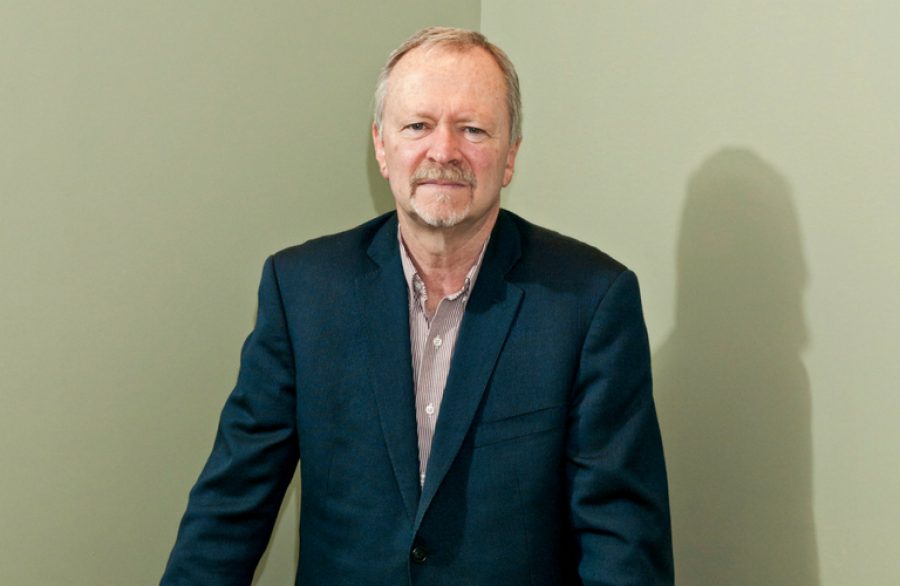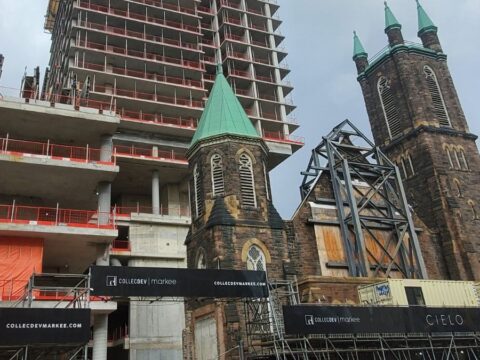As I sat down to enjoy a keynote from artist Kent Monkman at the “Trans as the New Frontier” conference at the University of Victoria in March, a shock ran through me from head to toe.
Once in my seat at the University Centre Farquhar Auditorium, I realized it was the space in which the 32nd General Council of the United Church of Canada had taken place 30 years earlier. That was the meeting in which the document Membership, Ministry and Human Sexuality was adopted. It was a document that I, a clergy delegate from South Alberta Presbytery, had a hand in writing.
You may unsubscribe from any of our newsletters at any time.
It openly allowed the ordination and commissioning of gays and lesbians for the first time in the United Church. It was a signal event for the denomination and arguably one that would bring our society to a new place on the issue of sexual orientation.
From Pierre Elliott Trudeau’s 1967 pronouncement that “there’s no place for the state in the bedrooms of the nation” when, as minister of justice, he removed homosexual acts from the criminal code to Kent Monkman’s 2017 masterpiece Cain and Abel, we have experienced a 50-year learning curve so steep it defies the best hopes of all prophets at the time. We now see only a greater acceptance of same-sex relationships but also the questioning of accepted gender binary assumptions.
Monkman is a genius Cree Two-Spirit painter, filmmaker, and illustrator who appropriates and disrupts the visual language of Western art history to draw attention to colonialism’s devastating effects, particularly focusing on its impact on gender and sexuality. He claims space in the colonial narrative for indigenous peoples by painting them into the romanticized landscapes of the 19th century.
Added into the mix, characters in his paintings challenge traditional gendered power dynamics. He introduces gender fluidity into a history of oppression. This has a giddying effect. Stereotypes are challenged and the rawness and shock of the truth is exposed in a new way.
In Cain and Abel, Monkman appropriates the myth of the first murder and ties it to the initial encounters between white settler culture and indigenous culture. Then he throws in gender fluidity. Both Cain and Abel have male torsos and female genitalia. By doing this, Monkman throws us completely off balance.
The shock invites us into a new place altogether, a place where language, as we know it, is stretched to the limit. Colonialism and gender binary assumptions, Monkman seems to be saying, are part of the larger struggle for justice.
Back in the early days, before language could be enlisted to join the struggle for justice, much bloodletting would have to take place. I remember in August 1988, just after the vote in which gays and lesbians became fully eligible for ordination and commissioning in the United Church, one of the keynote speakers at General Council gave a talk on forgiveness and reconciliation.
She put a photograph of Rembrandt’s Prodigal Son on the screen, with close-ups on the details of the work. She pointed out how the hands of the father were extended and rested on the back of the prodigal son as he knelt before his father, the remnants of his rags showing on his lower body, a shoe that had fallen off. Then she pointed out the face of the other brother in the background, dubious, silently seething. Apparently, over the centuries, grime had covered the face of the incredulous older brother. Only a recent cleaning had uncovered him.
There was something about the gentleness of the presenter’s voice, the tenderness of Rembrandt’s depiction and the jarring contrast in the scene that burst a floodgate in me and I began to sob uncontrollably. I felt totally safe, held by the regard of my friends in Sessional Committee #8, the group that had put forth the motion for acceptance, as we sat together in the aftermath. We had struggled to find consensus over many days. And we did. And we became friends forever.
It didn’t matter that things would fall apart in the days following the rise of the 32nd General Council. For a few hours before the reaction of the press and the incredulity of colleagues, friends and relatives, we were one, liberals and conservatives. We were a family in the Spirit.
In a sense, however, the same thing had happened to us as had happened to the Rembrandt painting. A kind of film had been drawn over our eyes. Our process, so expertly and respectfully led by Marion Best, a future moderator of the church, had hidden any possibility of skepticism and dissent. We became what we wanted to be: united, a truly united church. Then, a kind of cleaning took place.
The day after my return from that meeting, during the prayers after the sermon, my then-wife left the sanctuary. We never lived together again.
As the council left Victoria and dispersed to the four corners of the country, that warm bath quickly became a cold shower as the news became the headlines of the nation’s press. The decision changed my life and the life of the United Church of Canada. The day after my return from that meeting, during the prayers after the sermon, my then-wife left the sanctuary. We never lived together again.
In the coming months, whole congregations, including clergy, left the denomination. Other congregations were irreparably depleted or damaged. My own congregation, Knox United Church in Taber, Alta., though very supportive of me personally, lost some of its vibrancy and resilience. No congregation in the United Church of Canada was left unscathed by the vote that took place in the Farquhar Auditorium that warm August.
The thing is, I had gone into that meeting opposed to such a decision. It was the strength of my opposition that got me elected to General Council in the first place. I felt the weight of that responsibility and became all the more determined to try to find a way through it, a decision all or most members of the church could live with. It was a naïve hope, I see now. But I put all my energy into that hope.
I barely slept through the more than two weeks I was away in Victoria. I would wake in the middle of the night and scribble down notes and nuanced language. I came later to see that, like the abortion debate, the subject of gay and lesbian rights brought out the worst rigidities in people. But we were committed as a group to finding common ground.
My story sounds dramatic, and it is. But the whole story can never really be told. This is because not only did my life change forever that August, but those of three others in my immediate circle did too — my then-wife and her two children, my step-children. And so did the lives of those who have known and loved us since, those who would be born and will be born.
The extent of our collective suffering never will be shared because for each of us — my ex-wife and her children — the experience was very different, and, to be honest, even to this day, the events of August 1988 cannot now be discussed between us. To be sure, a public display of what had happened in innocent lives — the children’s — has always struck me as inappropriate in the extreme. But even if these stories cannot be told, their existence has to be acknowledged and honoured. Justice was served at General Council. Yes. And harm was also done.
It may only be on rare occasions, such as when I sat in that auditorium in March and experienced the warm shock of familiarity and remembered kinship, that one may sense contours of some universal spirit unfolding over the space of a lifetime. What a grace it is to see more clearly that individual suffering and struggle is part of something larger, something new that continues to be born into the language and culture of one’s own time.














